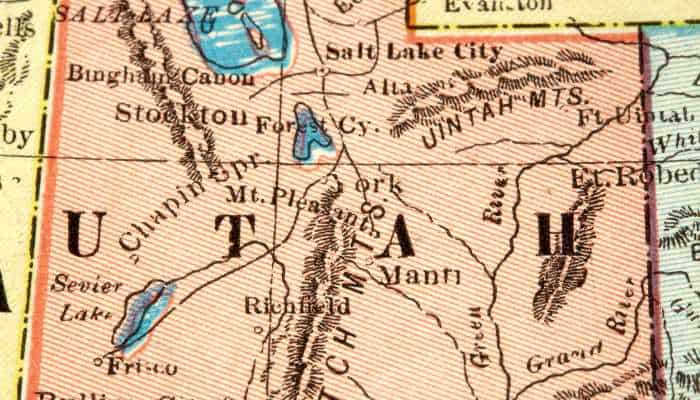Agriculture in Utah is both diverse and productive.
The state’s farmers grow a wide variety of crops, including wheat, corn, hay, barley, potatoes, and fruits and vegetables.
Utah’s climate and soil are well suited to agriculture, and the state’s farmers have been able to take advantage of this to produce high yields.
Plant Hardiness Zone
Let us examine the US Plant Hardiness Zone Map of the state.
Plant Hardiness Zone Map for Utah

Climate
Utah has a mainly dry, semi-arid, and desert climate. Summers are long and extremely hot, while winters are short and cold.
In summers, the average high temperatures are in the range of 85-100°F at the peak of July.
January high temperatures are between 30-55°F at the peak of the winter season. However, temperatures drop below 0°F in the majority of the state during the cold season.
Precipitation
The average annual precipitation in Utah ranges from 5 inches in the Great Salt Lake Desert to 12 inches in the lowlands and 15 inches in the Wasatch Front.
Snowfall is an ample 60 inches in Salt Lake City and substantial in much of the state except the far southern valleys.
The Wasatch Range receives up to 500 inches in some of its portions due to lake-effect snow.
Soil Type
The map below shows the ecoregions of Utah.

Now, using the table below, we’ll understand the soil orders of the state.
Soil Order Of Utah
| Soil / Sub Order | Location | Characteristics |
|---|---|---|
| Aridisols/Argids, Calcids, Durids, and Salids | Scattered all over the state. | 1. Argids have an argillic or natric horizon. 2. Calcids have a calcic or petro-calcic horizon and have calcium carbonate in the layers above. 3.Durids are the Aridisols that have a duripan. 4.Salids are the Aridisols that have a salic. |
| Inceptisols/Cryepts and Xerepts | Cryepts in the Wasatch and Unita mins and high plateaus while Xerepts in the Wyoming Basin. | 1. Cryepts are the cold Inceptisols of high mountains or high latitudes. 2. Xerepts are mainly freely drained Inceptisols that have a xeric moisture regime. |
| Entisols/Orthents and Fluvents | These soils are found in the eastern and central parts of the state | 1. Orthents are found on recent erosional surfaces. 2. Fluvents are the more or less freely drained Entisols that formed in recent water-deposited sediments. |
| Alfisols/Cryalfs | In the Wasatch and Unita mins and high plateaus. | 1. Cryalfs are the cold Alfisols that occur mostly at high elevations. |


